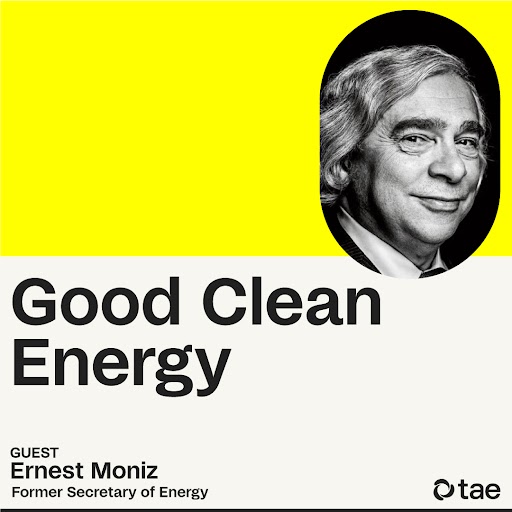


The Race for Low-Carbon Firm Power
Good Clean Energy is a new podcast about how to build a world with abundant, affordable, carbon-free electricity. TAE’s Chief Marketing Officer Jim McNiel hosts in-depth conversations with scientists, innovators and energy experts about the challenges our electricity systems face and the race for game-changing, clean ways to power our lives.
Our first guest is Ernest Moniz, the former Secretary of Energy under President Obama and CEO of the Future Energy Initiative, a nonprofit working to accelerate the clean energy transition. He joins the show to talk about the need for low-carbon firm power, the promise of fusion, and what will ultimately drive energy policy.

The End of Scarcity
Nuclear fusion is the primordial source of the Sun’s energy. For decades, scientists have been trying to recreate it here on Earth. Now, they’re closer than ever to achieving it, and unlocking a future of clean power for all.
In June 2022, amid an oil supply shortage resulting in part from the war in Ukraine, the United States marked a devastating milestone: The average price of a gallon of gasoline topped $5 for the first time in American history.
Development of multichord ion Doppler spectroscopy system for toroidal flow measurement of field-reversed configuration
December 2022 | K. Araoka | Review of Scientific Instruments | Paper
A double-chord ion Doppler spectroscopy (IDS) system was developed to measure the ion temperature and flow velocity of field-reversed configuration (FRC) plasmas in the FRC amplification via a translation-collisional merging (FAT-CM) device.

U.S. scores a nuclear fusion breakthrough — but experts caution commercial viability is a decade or more away
Fusion is another zero-emissions alternative to fossil fuels and radioactive nuclear energy

Fusion Industry Suddenly White-Hot After U.S. Lab Breakthrough
With commercialization years away, investors flock to technology’s long-term clean-energy potential
Michl Binderbauer is chief executive of a southern California firm that aims to create almost limitless energy through nuclear fusion, a starry goal that at times struck some prospective investors as futuristic.

U.S. to announce fusion energy ‘breakthrough’
Scientists hit a key milestone in the quest to create abundant zero-carbon power through nuclear fusion. But they still have a long way to go.
The Department of Energy plans to announce Tuesday that scientists have been able for the first time to produce a fusion reaction that creates a net energy gain — a major milestone in the decades-long, multibillion-dollar quest to develop a technology that provides unlimited, cheap, clean power.

The U.S. nuclear fusion breakthrough is a huge milestone — but unlimited clean energy is still decades off
In some ways, scientists at the Department of Energy’s National Ignition Facility (NIF) have been a bit down and out. The $3.5 billion facility was designed to replicate the atom-smashing reactions that occur inside the sun, a difficult process that requires enormous amounts of heat and pressure, and could theoretically solve humanity’s energy and climate woes.
But technical obstacles put NIF a decade behind in its goal of achieving fusion “ignition,” that is, getting more energy out of one of those reactions than it put in. The facility uses the largest lasers in the world to try and do that, focusing energy on a tiny capsule filled with hydrogen isotopes.

We have ‘ignition’: Fusion breakthrough draws energy gain
U.S. scientists have achieved “ignition” — a fusion reaction that produced more energy than it took to create — a critical milestone for nuclear fusion and a step forward in the pursuit of a nearly limitless source of clean energy, Energy Department officials said Tuesday.
Nuclear fusion, the process that powers the sun and other stars, occurs when two atoms’ nuclei collide under extreme temperatures, causing a reaction that can generate incredible amounts of energy with few environmental costs.

Nuclear fusion could transform the energy sector. Chevron and Alphabet are already investing.
The latest step toward pollution-free power has the potential to transform the energy sector, perhaps decades from now, but some companies are already positioning themselves to benefit.
Energy Secretary Jennifer Granholm said on Tuesday that scientists at the Lawrence Livermore National Laboratory in California had made “a tremendous scientific breakthrough” in their tests of nuclear fusion, the reaction that powers the sun. While prior efforts to achieve fusion—combining two hydrogen atoms to produce helium in a reaction that produces energy—consumed more energy than they released, the Livermore scientists flipped the balance.